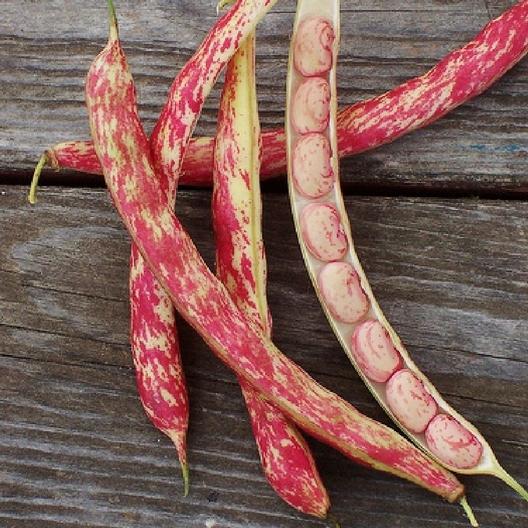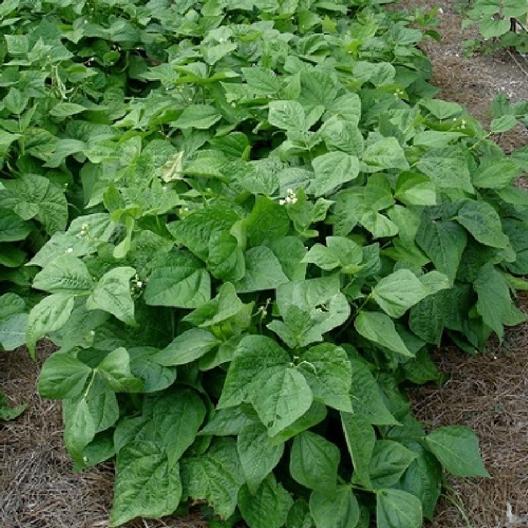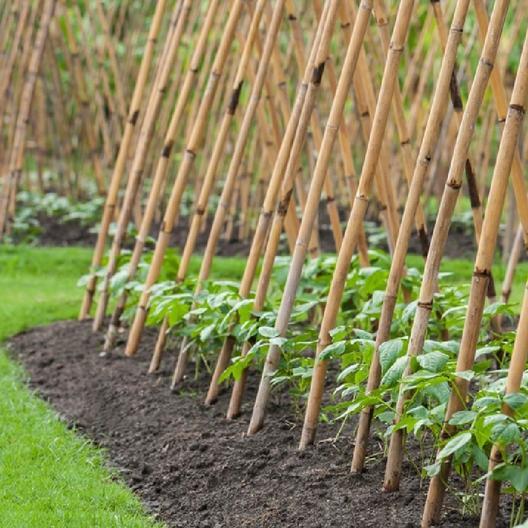Basic Bean Guide
There are few things better than wandering around your vegetable garden on a summer evening. There is a sense of clarity at the end of the day as you pluck a few weeds, dust the dirt off your hands and pick a green bean or two to pop into your mouth. The crunch, the freshness, the taste – it’s incomparable to anything you can buy at the grocery store.
A Little Background
Beans have been around a long time. They are the longest-cultivated plant and are an important source of protein throughout the world. Many traditional dishes throughout the world contain some sort of bean, probably because they can be cooked in so many different ways! To top all that off, beans are very easy to grow and maintain. In fact, if you are a beginner gardener beans are the perfect plant to start with. They germinate quickly, produce an abundance of fruits and they add nitrogen back into the soil.
Bean Terms: It’s a Thing!
Since beans have been around for such a long time there are many different varieties. We’ve put together a bean guide that covers some basic terms used to describe bean types and plants to help you choose which variety appeals to your taste (and which is best to grow in the garden space you have!)
Bean Fruit Types—Know Before you Eat
Dry Bean – When you hear the classic “Beans, Beans, The Magical Fruit” song this is the bean that it’s referring to. Dry beans grow in pods and are part of the legumes family of plants. The fruit is kidney-shaped or oval and they are harvested by removing them from the pod and then they are ready to be cooked, dried or canned. Dry beans include varieties like Kidney, Pinto, Navy, Lima and Black Beans.

Shell Bean – Refers to beans that are grown for their edible seed that is removed from a pod before cooking.
String Beans, Snap Beans, Wax Snap Bean, Green Beans – These are all very similar and come in a variety of colors and flavors. All of these bean varieties refer to beans that are grown for their edible pods. One with a gorgeous color is the bright yellow Pencil Pod Wax Bean.
Stringless Bean – Refers to newer cultivars of beans that have been bred to reduce the tough string along the joined edge of the bean pod.
Fava Beans – Also known at broad beans, fava beans are one of the oldest known cultivated plants. This bean is large, flat and starchy and can be eaten both cooked and raw. Try our Broad Windsor Fava bean for a great example.
Lima – Also known as butter beans get their name from the city of Lima, in Peru. Lima beans are not to be confused with a fava bean (they often are because both beans are light-colored once shelled). Lima beans are smaller than the fava bean and can be different in color, including green, brown, black, purple or white with dark red traces. Lima beans are starchier than fava beans so it’s a matter of personal preference.
Bean Plant Types: How the Plant Grows and Produces Fruit
Bush/Determinate – Bush bean plants (also referred to as Determinate plants) typically grow up to two feet tall and don’t require much (if any) support making them great for smaller spaces or container gardening. While they mature faster than pole beans they have shorter production time and typically produce all their beans in 2 weeks.
Pole/Indeterminate – Pole beans can grow up to 12 feet tall and need ample space to grow requiring trellises or other support. If you have the space and want a longer production time pole beans are for you. Pole beans take longer to begin producing but because they draw a lot of nutrients from their vines they produce for a longer period of time than bush beans with continual harvesting.


If you’ve grown beans in the past, you know how incredibly rewarding it is. And if this is your first time, you are in for a major treat. Eden Brothers has a huge selection of varieties and plant types, so explore bean seeds today, and see what strikes your bean fancy! Learn the ins and outs of planting in our Bean Planting Guide.